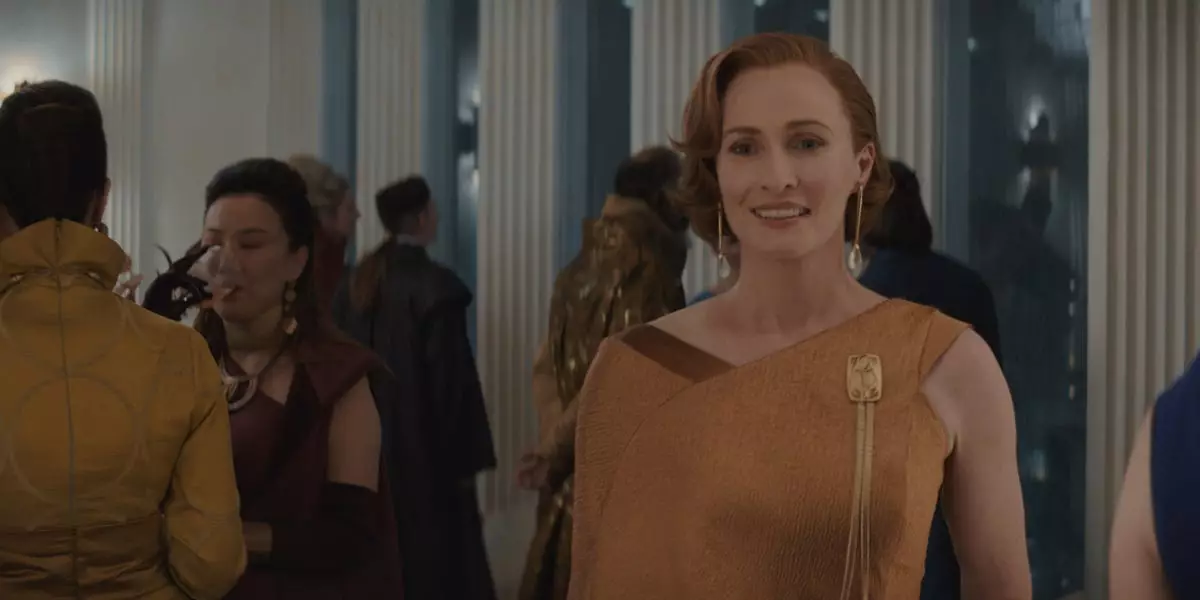“Andor,” the much-anticipated second and final season streaming on Disney+, takes viewers deeper into the heart of rebellion within the Star Wars universe. Unlike its predecessors that predominantly featured epic space battles and larger-than-life protagonists, this series strips away the glamour to reveal the gritty realities faced by those who oppose authoritarianism. At the helm is creator Tony Gilroy, whose vision for “Andor” emphasizes the importance of resource allocation in uprisings—an underexplored theme in revolution narratives. One of the show’s greatest strengths is its ability to humanize the struggle against oppression by diving into the intricacies involved in building a resistance.
Gilroy’s assertion, that every revolution revolves around finite resources, cuts to the core of the series’ premise. The show deftly portrays how ordinary people—spies, politicians, and civilians—find themselves on unthinkable paths in the fight for their freedom. This realism is what sets “Andor” apart from other entries in the Star Wars saga, eliminating the need for casual viewers to possess extensive lore knowledge. Gilroy emphasizes accessibility, ensuring that both casual viewers and hardcore fans can engage with the story from the outset.
Rich Character Development
The character arcs presented in “Andor” are intricately woven and highlight the emotional toll of insurrection. Diego Luna’s portrayal of Cassian Andor evolves significantly, showcasing his transition from a self-serving rogue to a committed revolutionary. This transformation is enhanced by the show’s thoughtful narrative structure, which employs time jumps to highlight pivotal moments. The emotional weight is palpable, creating a genuine connection between the audience and the characters.
Genevieve O’Reilly’s performance as Mon Mothma also bears mentioning. Her character serves as a bridge between the political machinations of rebellion and the deeply personal stakes involved in dissent. O’Reilly aptly describes the narrative as “feeling like I’m in Downton Abbey in Star Wars,” emphasizing the familial relationships and the subtleties of human emotion even amid galactic conflicts. The series ensures that each character’s motivations are not merely plot devices, but reflections of the human condition caught in the storm of upheaval.
Moreover, the series invites viewers to question the moral implications of warfare. There are no clear-cut heroes or villains; rather, characters face dilemmas that resonate on a human scale, inviting the audience to ponder the cost of their fight. Every decision made in the show is fraught with consequence, making the narrative not just compelling, but deeply thought-provoking.
Complex Storytelling and Thematic Depth
One of the significant artistic decisions in “Andor” is the distinct narrative structure of the second season, divided into four three-episode arcs. This episodic approach presents a taut pacing and keeps viewers engaged by delivering concentrated bursts of action and character revelations. This model allows for sustained tension while introducing significant emotional developments, moving the plot seamlessly toward the buildup to “Rogue One.”
As Gilroy notes, the storytelling is ever-evolving, ensuring that the viewers are met with fresh perspectives as the series progresses. This multifaceted approach encourages audiences to invest not just in the spectacle, but in the subtext surrounding the trials and tribulations faced by the characters. Each arc serves as a microcosm of the larger rebellion, illustrating how scattered factions unify in their shared struggle against imperial dominance.
A Cinematic Experience
The show’s visual storytelling is another area where “Andor” excels. The production design, coupled with the cinematography, creates a grounded yet expansive feel that emphasizes the scale of the rebellion and the stakes involved. This is not just another flashiness of special effects; rather, the visuals serve as an extension of the narrative’s themes. The series masterfully contrasts the desolation of oppressive environments with the sparks of hope ignited in communal settings, underscoring the enduring human spirit amidst chaos.
By intertwining storytelling, character development, and production quality, “Andor” transcends traditional sci-fi tropes and emerges as a profound study of what it means to fight for justice. In doing so, it highlights the depth and complexity of revolutions, making it a must-watch for anyone seeking to understand the intricacies involved in the quest for freedom.

